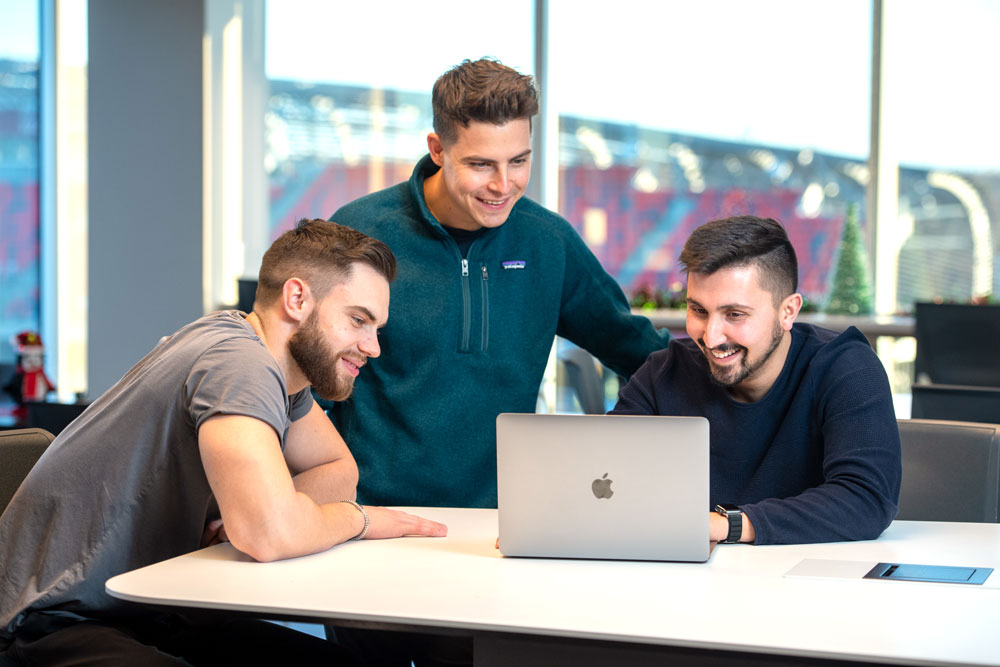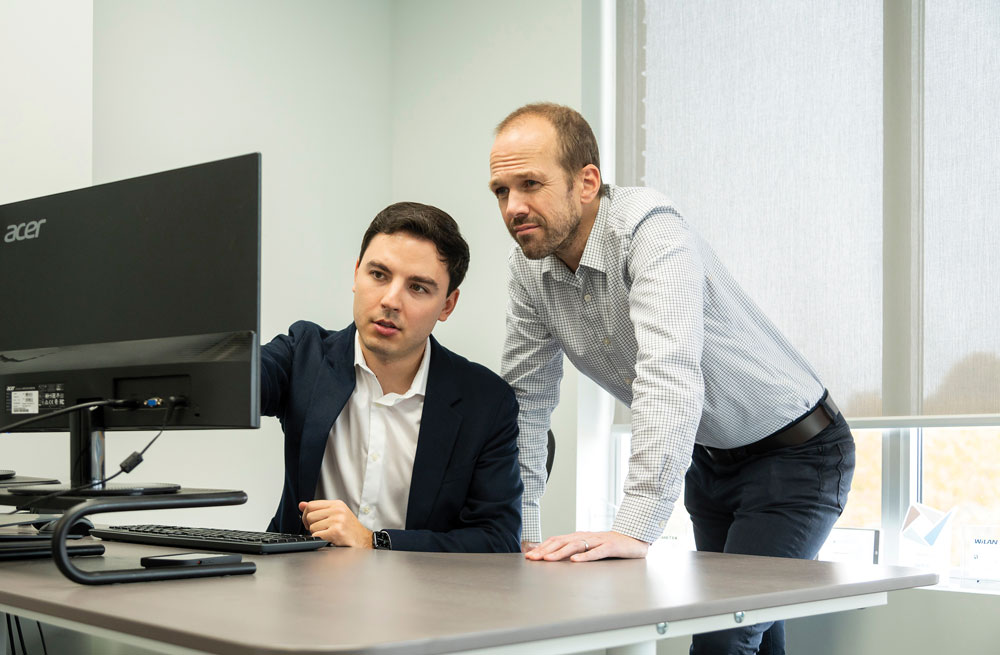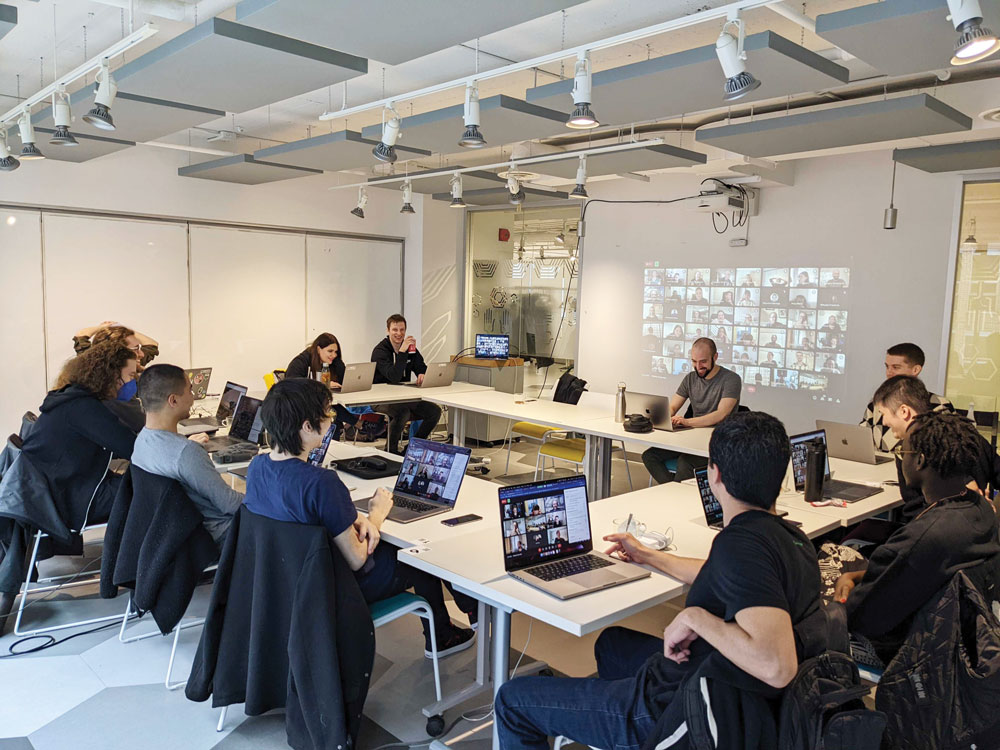“A comfort zone is a beautiful place, but nothing ever grows there.”
Loved this quote from one of our fastest-growing company top 10 recipients.
From reading the profiles of our top 10, it’s obvious that all of our recipients have pushed themselves beyond their comfort zones to pursue their dreams — and they’re seeing their businesses grow as a result.
(Sponsored)

Inspired by love and loss, donor Tom Moore triples Giving Tuesday donations
For Tom Moore, a retired tech executive and longtime Ottawa resident, giving back to The Ottawa Hospital isn’t just a gesture of generosity. It’s personal. Tom grew up on a

Inspired by love and loss, donor Tom Moore triples Giving Tuesday donations
For Tom Moore, a retired tech executive and longtime Ottawa resident, giving back to The Ottawa Hospital isn’t just a gesture of generosity. It’s personal. Tom grew up on a
Here are the top five for 2023.
1. Bushbalm
Growth rate: 1,026%
Last year’s rank: 1
Bushbalm are specialists in bikini line skincare and hair removal.

What has been the biggest challenge you have faced in relation to the fast growth of your company?
The challenging economic times have made us pivot our business strategies. During COVID, the growth in e-commerce was rapid, but has reverted to the average in 2022. Our business was primarily focused on e-commerce, but we had to pivot to other channels. This has paid off for us in the long run, but pivoting the business model is very hard in the moment. We saw our e-commerce sales growth slowing and needed additional channel opportunities to expand and diversify. Managing multiple channels is difficult, but having only one channel can be risky.
What did you do to address it?
To diversify our channel strategy we had to look into what other opportunities existed for the brand. We opted to work on small waxing salons, as there are over 360,000 of them alone in the United States. This meant we had a big opportunity to scale the business on a larger untapped channel. We set up a small team to test the market and have since scaled it to be a much larger part of the business. In 2022, we added more than 1,000 waxing salons to our distribution model, which has been a big part of our new channel strategy. We will continue this strategy.
What has been your biggest lesson learned?
It’s critical to be a diversified business model. Although scaling one specific business model is a faster way to grow, it can also be a faster way to slow. You always need to evaluate your business and see if you have risks associated with your business model. For instance, we now have over 1,500 waxing salons selling Bushbalm products. Our risk of losing all 1,500 accounts overnight is extremely low. However, if we were with a major retailer, you can lose them all at once. Diversification is key. We’ve now added Amazon, retail stores and waxing salons, so we can manage slowing growth in our e-commerce business.
2. Noibu Technologies Inc.
Growth rate: 954%
Last year’s rank: 2
Noibu detects, prioritizes and resolves critical e-commerce errors to deliver better digital experiences and prevent lost revenue.

What has been the biggest challenge you have faced in relation to the fast growth of your company?
One of the significant challenges is managing the increased workload and demands of new customers. As the customer base grows, the startup must ensure that it has the necessary infrastructure and resources to meet their needs. Failure to do so can result in dissatisfied customers. Another challenge is maintaining the startup’s culture and values as it expands.
What did you do to address it?
As the company grows, it is essential to invest in scalable infrastructure and resources to meet the increased workload and demands of new customers. This can involve implementing new software, automating processes and increasing server capacity. Establishing regular team meetings, check-ins, and project management tools can help ensure that everyone is on the same page. Foster a strong culture and values by developing and communicating a clear mission statement, establishing company values, and promoting a strong sense of community and collaboration. Hire strategically by focusing on hiring employees who share the company’s values and are committed to its mission.
What has been your biggest lesson learned?
Successful startup companies understand that the business landscape is constantly changing and they need to be able to adapt quickly. This can involve pivoting the business model, adjusting the product offering, or shifting the target market based on changing customer needs and preferences. As we enter into the age of doing more with less, it is important to lean on the existing team and look for opportunities to automate.
3. Sampford Advisors
Growth rate: 817%
Last year’s rank: 8
Sampford provides mergers and acquisitions advisory services for technology companies.

What has been the biggest challenge you have faced in relation to the fast growth of your company?
Keeping up! Our business began to really scale just before COVID as our reputation in the Canadian marketplace began to grow and then COVID gave it a further boost by really accelerating software mergers and acquisitions. Being able to staff up with the right team members that fit the existing culture has always been our biggest challenge, but it was even more prevalent during COVID because of a lack of talent and how quickly we had to scale compared to previous years when we had time to anticipate staffing needs. This is especially the case given we are a services business.
What did you do to address it?
We built relationships with Carleton University and the University of Ottawa and increased our presence on campus by doing various teach-ins, speeches and presentations. We also established a more formal internship program so that we could hire full-time positions more consistently from former interns. In particular, we made use of Ottawa U’s and Carleton’s co-op programs to recruit for internships all year round (versus just recruiting summer interns).
What has been your biggest lesson learned?
Always be recruiting for new talent. Even if we have no new open positions, we are always building a pipeline of candidates that we can leverage if we need to. We are also continuing to hire interns/co-ops every semester so that we can get their help in managing peaks in workload, and recruiting for future positions. Instead of using interviews and other testing, we can work with someone for four months.
4. Fellow
Growth rate: 729%
Last year’s rank: New in 2023
Fellow is where teams gather to have productive team meetings and meaningful one-on-ones.

What has been the biggest challenge you have faced in relation to the fast growth of your company?
In order to sustain our growth rate, we need to focus on moving up-market. While our lead flow has been steadily increasing, it hasn’t been growing as fast as we would like. Additionally, the law of large numbers means that we need to expand into larger deals to continue our momentum. Although we closed a $100K+ deal last year, we have yet to replicate that success. To achieve this, we are targeting companies that have initiated proactive measures to solve the meeting problem.
What did you do to address it?
To successfully move up-market, we need a comprehensive go-to-market approach. Our marketing team is working on defining and targeting our ideal customer profiles to better resonate with mid-market customers. We are also launching new initiatives to increase our lead count in this segment. To aid these efforts, we are hiring a VP of marketing with experience in navigating this stage of growth. Our sales team is evolving to cater to mid-market customers, who require a more strategic approach.
What has been your biggest lesson learned?
Overcoming challenges in outbound and top-down selling. During the category-creation stage, it can be difficult to sell to mid-market and enterprise-sized organizations since they typically lack a designated “company meeting owner” at the executive level. While they may have owners for other areas like task management or customer relationship management, the meeting problem is often treated as an ad-hoc initiative. Our focus is on inbound strategies to attract customers who are seeking solutions.
5. Food Cycle Science Corporation
Growth rate: 426%
Last year’s rank: 6
Food Cycle is the inventor of the FoodCycler, the science-backed solution to food waste.
What has been the biggest challenge you have faced in relation to the fast growth of your company?
Maintaining our company culture is a crucial part of our growth strategy. We recognize that, as we scale, it becomes increasingly difficult to preserve the unique values and culture that helped to propel us to success in the first place. Moreover, striking a delicate balance between seizing new opportunities and staying focused on our mission and core objectives is essential.
What did you do to address it?
We continually reinforce our core values to maintain a strong culture, ensuring every employee understands and embodies them. We know that hiring plays a vital role in preserving and enhancing our company culture, so we take the process very seriously. When recruiting new employees and looking at skills and qualifications, we also consider whether they will fit our company culture well. While there may be pressure to hire quickly to keep up with the demands of a growing business, we take the time to find the right candidates.
What has been your biggest lesson learned?
We must build and protect a company culture that empowers people to take calculated risks while embracing failure and seeing it as the learning opportunity that it is. By building and protecting our strong company culture, we can foster an environment that encourages bold ideas, creative solutions, diligence and focus. Ultimately, success comes from finding the intersection between passion, societal need and economic viability.
Outside the comfort zone: Meet this year’s fastest-growing companies




